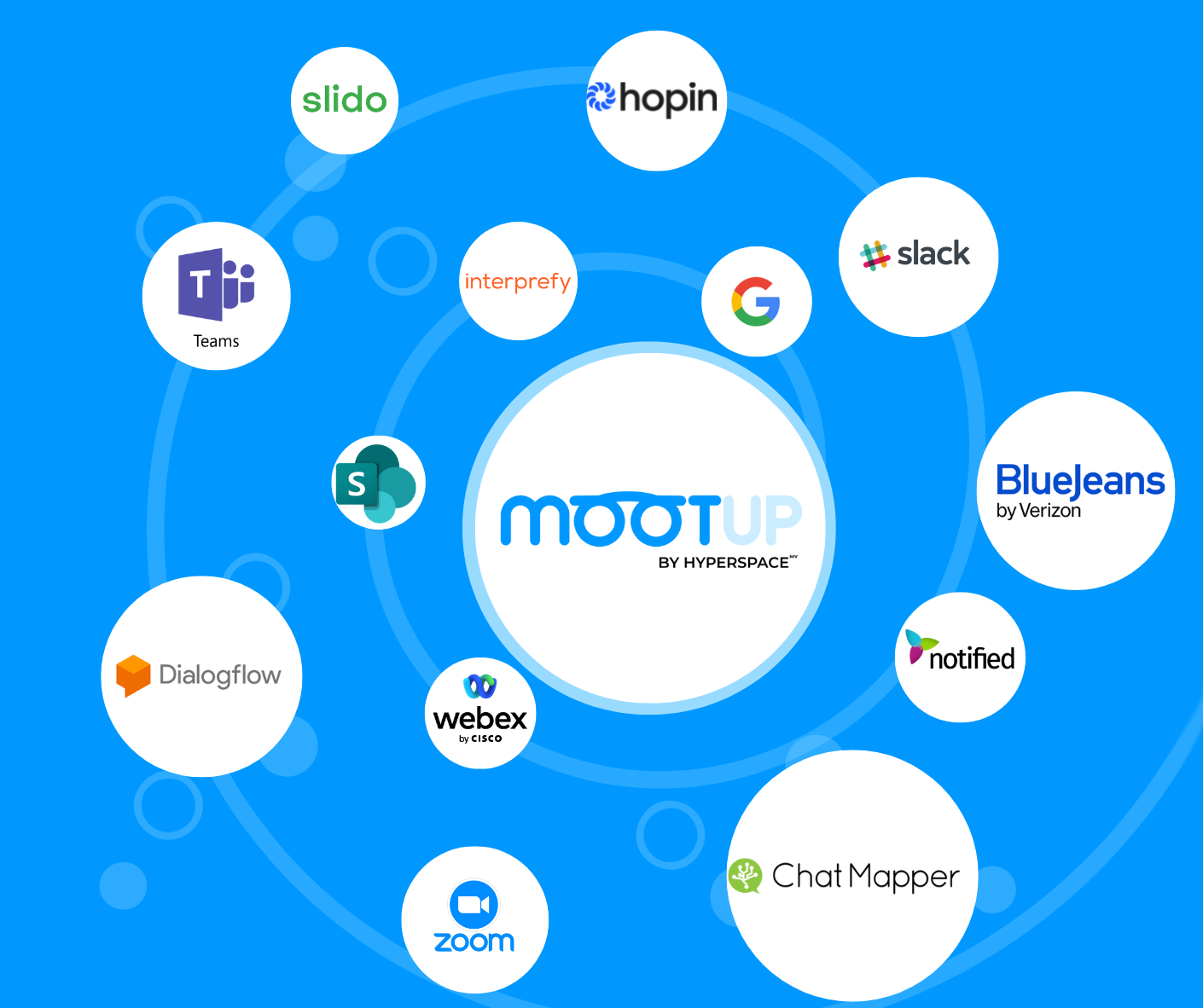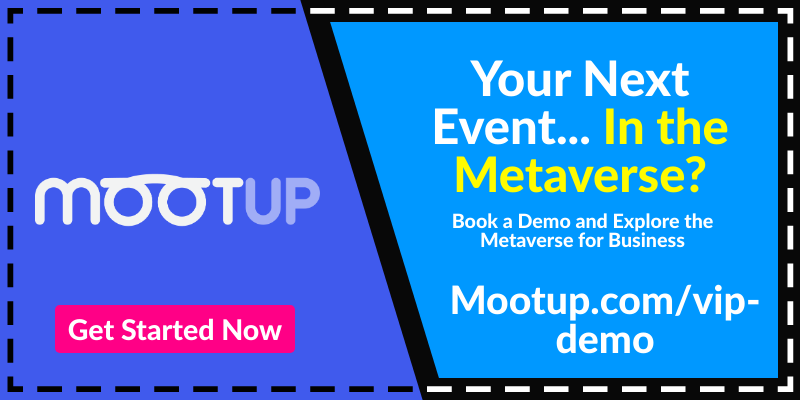As the event industry continues to evolve, virtual event metrics have become an essential tool for measuring success and identifying areas of improvement. With a plethora of data available through various virtual event platforms, it can be challenging to determine which key performance indicators (KPIs) are most valuable in assessing your online event’s effectiveness.
This blog post will explore crucial virtual event metrics that every organizer should track, such as active participant rate, video engagement levels, chat interactions, and email campaign analytics. Furthermore, we will delve into attendance tracking methods and ROI calculation techniques that provide valuable insights into audience behavior patterns during live sessions and post-event website traffic.
Additionally, our discussion will cover speaker engagement statistics like applause rates and click-through stats while examining networking opportunities offered by live polls and Q&A sessions. Finally, learn how demographic data analysis can enhance lead identification processes to optimize future events. Stay tuned for an in-depth guide on harnessing the power of virtual event metrics for maximizing your online gatherings’ success.
Table of Contents:
- Key Virtual Event Metrics to Track
- Active Participant Rate for Gauging Overall User Engagement
- Video Engagement Levels Indicating Content Effectiveness
- Chat Interactions Determining Lead Quality
- Attendance Tracking & ROI Calculation
- Speaker Engagement & Audience Satisfaction Ratings
- Networking Opportunities & Lead Identification Process Enhancement
- Frequently Asked Questions Virtual Event Metrics
- Conclusion
Key Virtual Event Metrics to Track
To measure the success and impact of online events, event industry professionals need to track various key performance indicators (KPIs) such as active participant rate, video engagement, chat interactions, and email open and click-through rates. These virtual event metrics provide valuable insights into attendee behavior and help organizers make informed decisions about future investments in similar events.
Active Participant Rate for Gauging Overall User Engagement
The active participant rate is a crucial metric indicating your attendees’ engagement during your virtual event. By tracking this KPI, you can identify which sessions or activities generate the most interest among participants. A high active participant rate signifies that users find value in your content and are more likely to stay engaged throughout the program.
Video Engagement Levels Indicating Content Effectiveness
Video engagement levels, including watch time, play rate, completion rate, and average viewing duration, are essential virtual event metrics that showcase your content’s effectiveness at capturing audience attention. Monitoring these statistics helps organizers understand what types of presentations resonate with their target audience and identify areas where improvements could be made for future events.
Email Campaign Metrics Assessing Marketing Efforts
- Email Open Rates: The percentage of recipients who opened an email sent by the organizer regarding the virtual event provides insight into whether subject lines were compelling enough to grab attention.
- Email Click-Through Rates: This measures how many recipients clicked on links within the email, which can indicate whether the content was engaging and relevant to your audience.
- Email Conversion Rates: The percentage of recipients who completed a desired action (e.g., registering for the event) after clicking on a link in an email is crucial for evaluating marketing efforts’ effectiveness.
Chat Interactions Determining Lead Quality
Analyzing chat interactions during virtual events helps organizers identify potential leads based on their level of engagement. By monitoring questions, comments, and connections established within chat rooms or private messaging platforms like MootUp, you can assess lead quality more accurately while providing opportunities for personalized follow-up communication post-event.
It is important to track key virtual event metrics to gauge user engagement, content effectiveness, lead quality and marketing efforts. Tracking attendance numbers during live sessions and post-event website traffic patterns can help calculate the ROI of a successful virtual or hybrid event.
Key Takeaway:
A no-code platform is being developed to create and host virtual and hybrid events in the Metaverse. The topic at hand is measuring these events’ success, referred to as “virtual event metrics.”
Attendance Tracking & ROI Calculation
Event attendance tracking is a vital metric that helps you calculate return on investment (ROI) from hosting a virtual conference or seminar. This information enables organizers to identify areas where improvements could be made while also evaluating the effectiveness of their marketing strategies concerning brand awareness generation and potential future sales opportunities resulting from increased exposure via search engine optimization (SEO).
Monitoring attendee numbers during live sessions
To accurately track attendance, event industry professionals should monitor the number of participants joining live sessions throughout an online event. Using platforms like MootUp, which offers real-time analytics and reporting tools, organizers can gain valuable insights into attendee behavior patterns, such as peak times for participation and overall engagement levels.
- Peak times: Identifying when most attendees are active during your virtual event allows you to optimize scheduling for future events.
- Average session duration: Measuring how long users stay engaged in each session can help determine content quality and relevance.
- User retention rate: Analyzing user drop-off rates provides insights into possible issues with technical aspects or content delivery methods that need improvement.
Analyzing post-event website traffic patterns for SEO benefits
Beyond monitoring participant numbers during live sessions, analyzing post-event website traffic patterns is essential to understand better how your virtual event has impacted organic search rankings. Increased visibility through improved SEO efforts correlates with higher web traffic, leading to more significant lead-generation opportunities and enhanced brand recognition within targeted markets.
- Create custom landing pages: Design unique landing pages for your virtual event to track website traffic and conversions effectively. Utilize tools like Google Analytics to measure page performance and user behavior.
- Monitor keyword rankings: Keep an eye on relevant keywords associated with your event, industry, or niche. Use SEO tracking tools such as Ahrefs or SEMrush to monitor changes in search engine ranking positions following the virtual event.
- Evaluate backlink profiles: Analyze the quality and quantity of inbound links pointing toward your website after hosting a virtual conference or seminar. A strong backlink profile can significantly impact organic search visibility, increasing web traffic and potential sales opportunities.
Incorporating these attendance tracking methods into your overall strategy will help you calculate ROI more accurately while identifying areas for improvement within marketing efforts, content delivery mechanisms, and technical aspects related to hosting successful online events using platforms like MootUp.

Attendance tracking and ROI calculation are essential metrics to measure the success of any virtual event. By monitoring attendee numbers during live sessions and analyzing post-event website traffic patterns, event industry professionals can gain valuable insights into their audience’s engagement with a particular presentation or product. Moving on from attendance tracking, speaker engagement and audience satisfaction ratings provide additional data points for evaluating an event’s overall performance.
Unlock limitless possibilities with MootUp‘s Metaverse, offering secure access controls that allow for unlimited users, enabling you to create private, internal initiatives or public-facing experiences that can effortlessly scale with your company’s requirements.
Key Takeaway:
A no-code platform is being developed to create and host virtual and hybrid events in the Metaverse. The topic at hand is measuring these events’ success, known as virtual event metrics.
Speaker Engagement & Audience Satisfaction Ratings
Measuring speaker engagement is crucial in understanding audience satisfaction with the content delivered throughout an online program. By analyzing “applause” rates or click-through statistics during presentations within the virtual platform, high levels of interaction indicate greater satisfaction – contributing positively towards overall KPI scores such as Net Promoter Score (NPS), attendee retention rates, and audience satisfaction ratings.
Applause Rates Reflecting Speaker Popularity Among Attendees
In a virtual event setting, applause rates can be used to gauge how well-received a speaker’s presentation was by attendees. This metric can be tracked through features like “likes,” “claps,” or other interactive elements embedded within the MootUp platform. High applause rates reflect a speaker’s popularity and help organizers identify which topics resonate most with their audience, allowing them to tailor future events accordingly.
Click-Through Statistics Showcasing Presentation Effectiveness
A way to measure presentation effectiveness is by tracking click-through statistics on links shared during sessions. These metrics provide insights into whether attendees found value in the resources provided and if they were engaged enough to explore further information related to the topic discussed. Analyzing these data points helps organizers understand what type of content drives higher engagement and encourages active participation from their audience.
- Actionable Insights: Use click-through statistics to determine which types of content resonate best with your audience and incorporate similar materials in future events for better results.
- Audience Retention: High click-through rates can indicate audience retention, as engaged attendees are likelier to remain active throughout the event and participate in subsequent sessions.
- Speaker Feedback: Share these metrics with speakers to provide constructive feedback on their presentation style and content, helping them improve for future events.
Incorporating speaker engagement and audience satisfaction ratings into your virtual event analytics strategy is essential for understanding the effectiveness of your online program. By monitoring applause rates and click-through statistics, you can make data-driven decisions that lead to improved attendee experiences, higher levels of interaction, and ultimately better overall KPI scores.
By tracking applause rates and click-through statistics, event organizers can gain valuable insights into the engagement levels of their speakers and audience satisfaction ratings. With this knowledge, creating more effective networking opportunities and lead identification processes through live polls & Q&A sessions, and demographic data analysis are possible.
Key Takeaway:
This project aims to create a no-code platform for hosting virtual and hybrid events in the Metaverse. The focus topic is virtual event metrics, which involve measuring and analyzing data related to attendee engagement, participation rates, and other key performance indicators.
Networking Opportunities & Lead Identification Process Enhancement
In virtual events, networking opportunities are crucial in keeping attendees engaged and fostering connections among participants. Event organizers can significantly increase user engagement by offering interactive features such as live polls and Q&A sessions during webinars. This leads to a more successful event and contributes to improved lead identification processes.
Live Polls & Q&A Sessions for Increased Engagement
MootUp’s platform offers various tools that enable real-time interaction between speakers and attendees, including live polls and Q&A sessions. These interactive elements encourage active participation from the audience while providing valuable insights into their preferences, opinions, and concerns. As an added benefit, this increased level of engagement helps identify potential leads based on attendee responses.
- Live polls allow organizers to gather instant feedback on specific topics or gauge audience sentiment throughout the event.
- Q&A sessions allow attendees to ask questions directly to speakers or panelists – further enhancing their overall experience within the virtual environment.
Demographic Data Analysis to Improve Lead Identification Processes
Prioritizing data collection is essential when hosting virtual events since it provides invaluable information about your target audience. Demographic data gathered through registration forms completed before entering the virtual environment allows organizers to understand better who is attending their events – ultimately leading towards optimized lead generation processes.
Analyzing demographic data collected from registrants enables you to:
- To segment your audience based on factors such as job title, industry sector, company size or geographical location – helping tailor marketing efforts accordingly;
- To identify key decision-makers and influencers within your target market, increasing the likelihood of generating high-quality leads;
- To assess the effectiveness of marketing campaigns by comparing attendee demographics with those targeted during promotional efforts.
.png)
By leveraging virtual event analytics, organizers can make informed decisions about future investments in similar events – driving sales, building brand awareness, and enhancing lead identification processes. This data-driven approach contributes to a more successful virtual event experience for attendees and organizers alike.
Key Takeaway:
A no-code platform is being developed to create and host virtual and hybrid events in the Metaverse. The discussion topic is about measuring these events’ success through virtual event metrics.
Frequently Asked Questions Virtual Event Metrics
What are the success metrics of virtual events?
Success metrics for virtual events include active participant rate, video engagement levels, chat interactions, email campaign performance, live session attendance numbers, post-event website traffic patterns, applause rates for speakers, click-through statistics on presentations and demographic data analysis to improve lead identification processes.
What metrics can you build into your online organizing to measure success?
To measure success in online organizing efforts, incorporate key performance indicators (KPIs) such as registration conversion rates, attendee satisfaction ratings from surveys or polls, social media engagement, networking opportunities generated and leads captured through various channels like chat rooms or Q&A sessions.
What is the ideal length of a virtual event?
The ideal length of a virtual event depends on its purpose and audience preferences. Generally speaking, 2-4 hours per day is recommended for multi-day conferences, while shorter webinars may last around 45 minutes to an hour. It’s crucial to balance delivering valuable content and avoiding attendee fatigue.
What is the no-show rate for virtual events?
No-show rates vary depending on factors like industry sector and marketing efforts but typically range between 40-60% for virtual events. To minimize no-shows, event organizers should focus on effective promotion, personalized reminders and engaging content to encourage attendees to participate.
Conclusion
By tracking and analyzing virtual event metrics, you can gain valuable insights into the performance of your events. You can use these insights to optimize future events and ensure success. Virtual event metrics provide an invaluable tool for evaluating the success of your virtual or hybrid events. Still, it is important to remember that challenges may arise when tracking them accurately. With a strategic approach, however, you can overcome those obstacles and confidently create more engaging experiences for attendees.
Elevate your Metaverse to be “futureproof” with MootUp. This browser-based platform enables access from all smartphones, tablets, laptops, and VR/AR headsets, without software installation or downloads, providing seamless access across all devices.
Unlock the potential of virtual and hybrid events with MootUp. Our no-code platform provides powerful metrics to measure success and maximize ROI for your next event.

